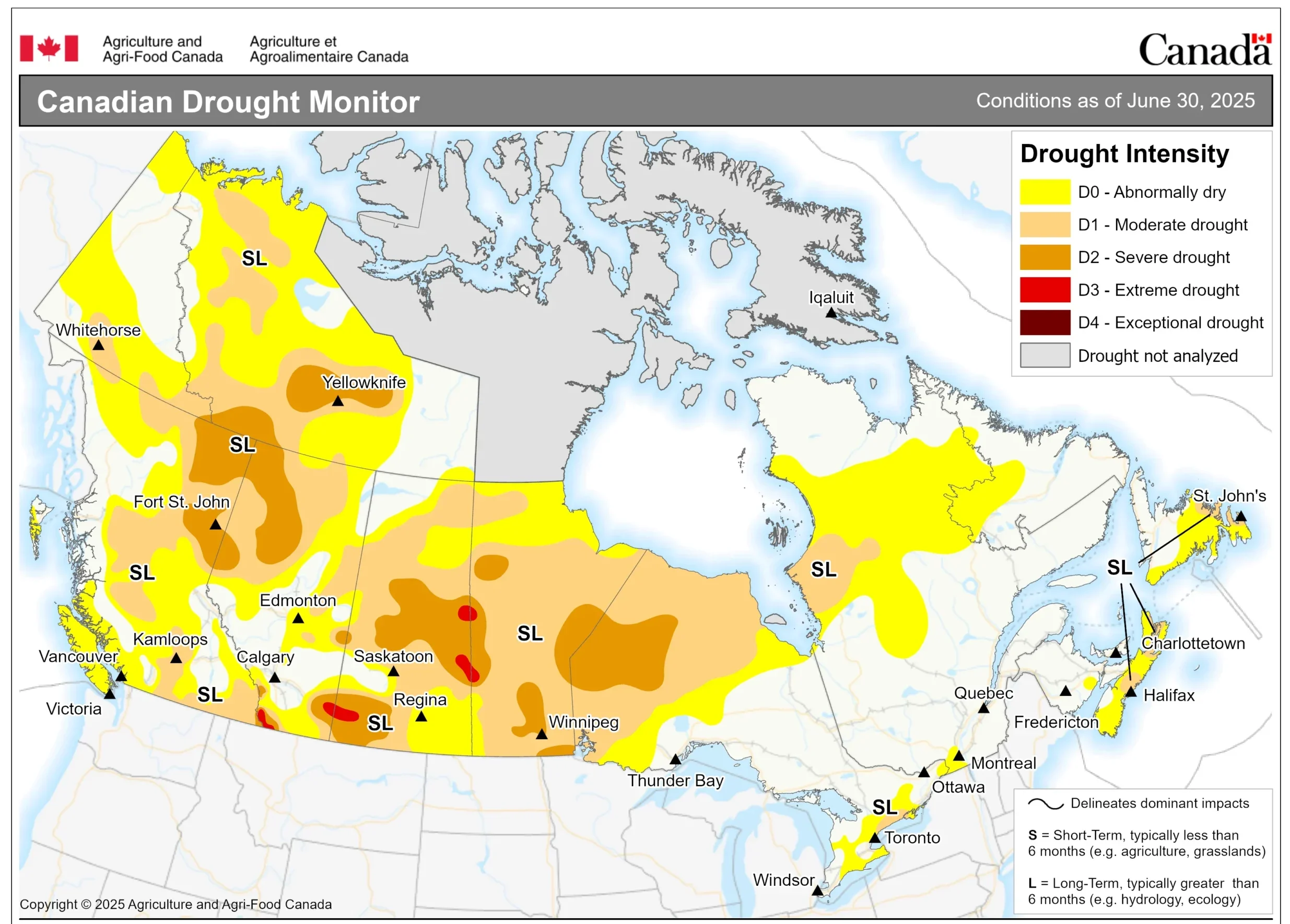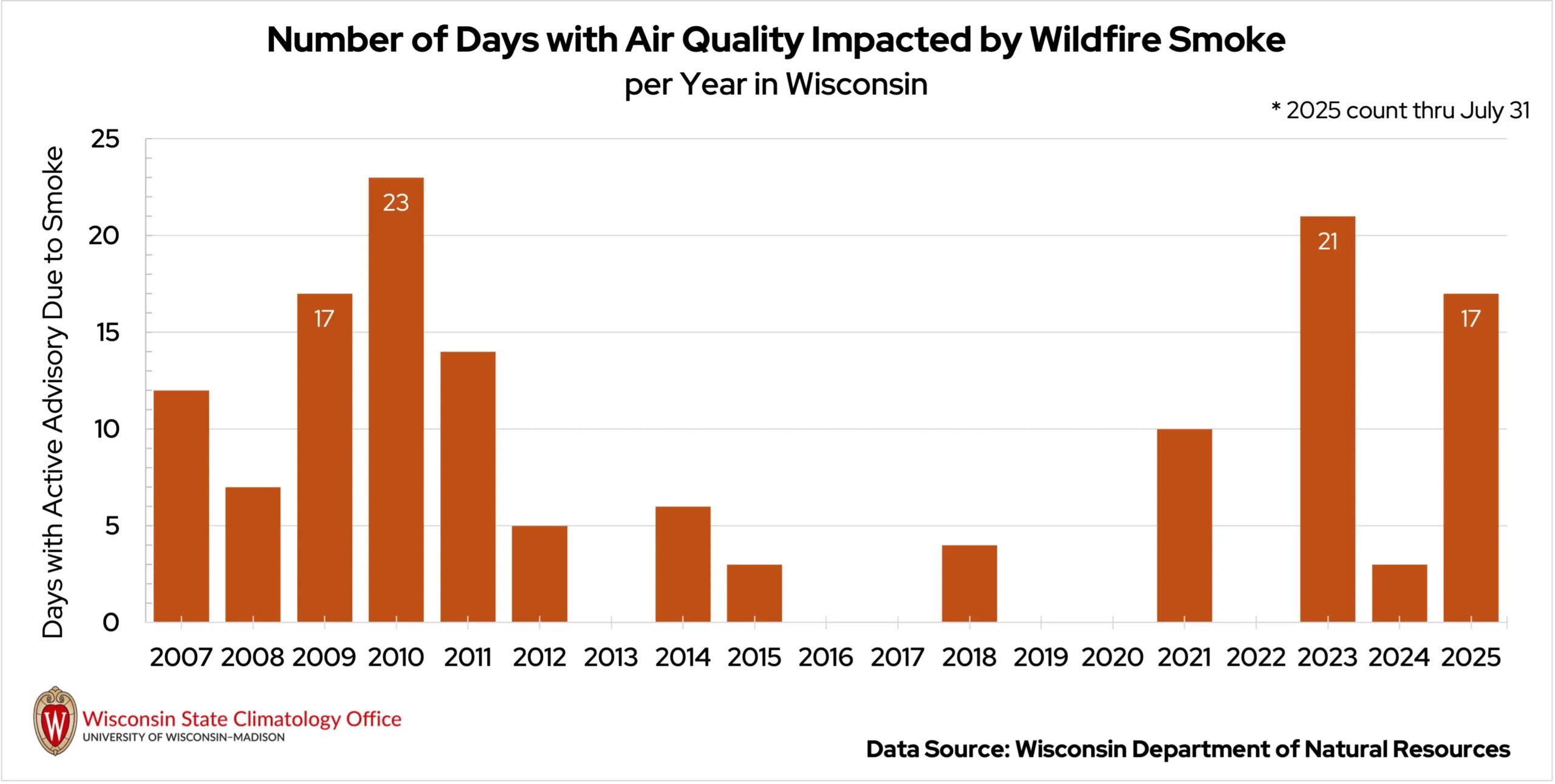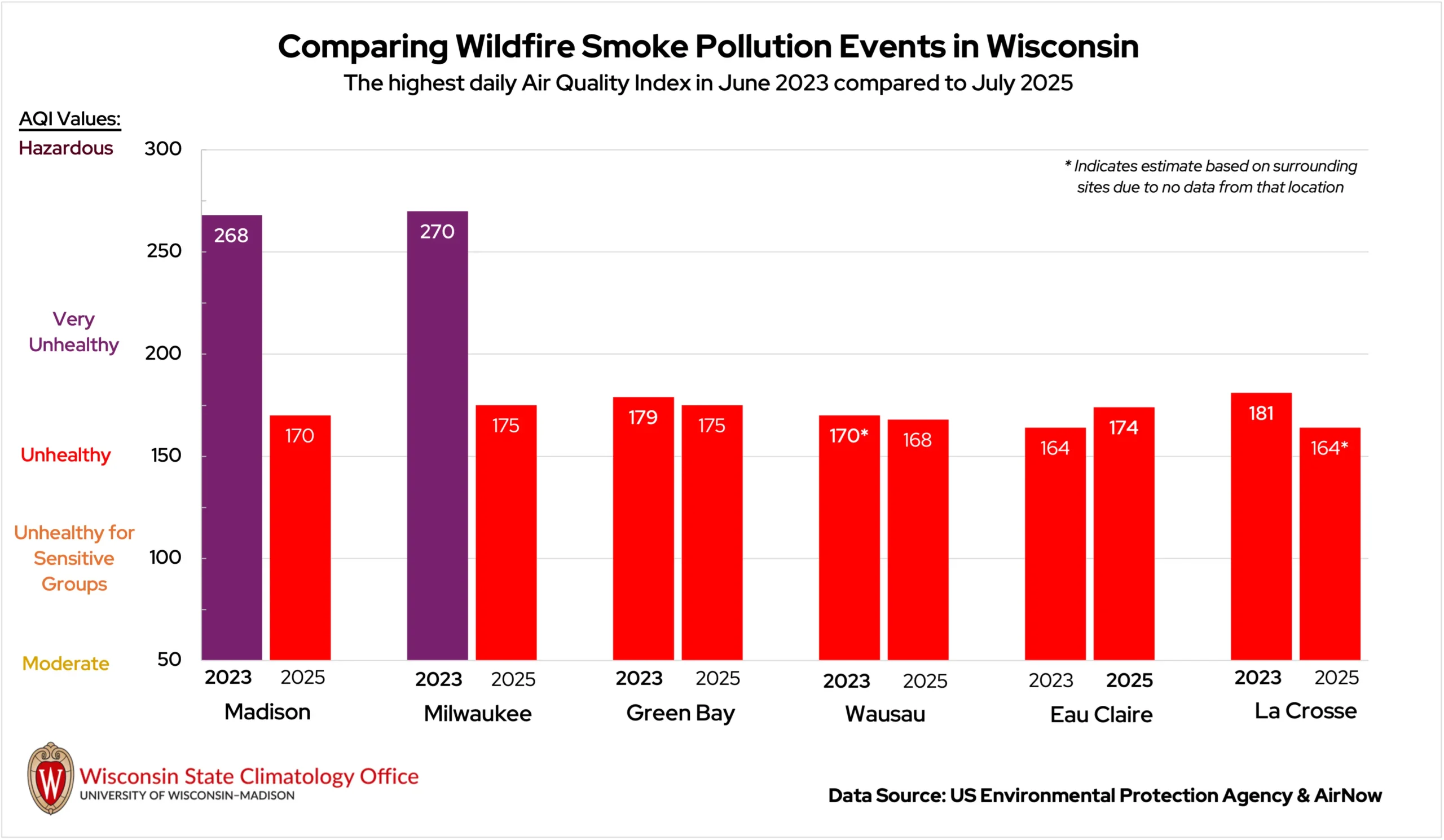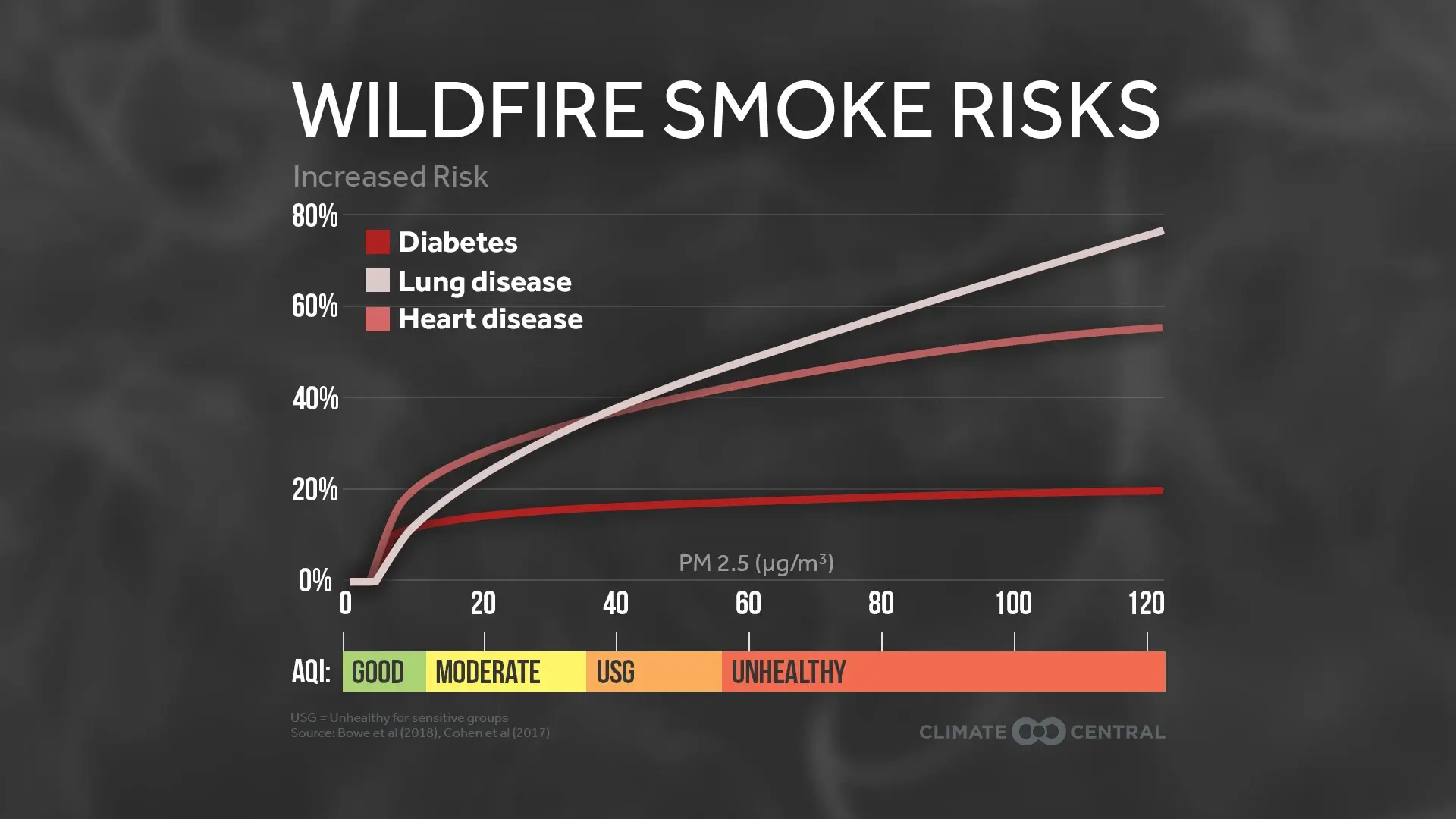We’re in the thick of the summer season, and Wisconsinites are once again finding themselves in the thick of Canadian wildfire smoke. It’s a common feeling among residents that this seems to be an increasing trend in recent summers, especially after record-poor air quality in 2023.
Shifts in Wildfire Season
While it isn’t new for the Midwest to feel impacts from Canada’s wildfires, we are seeing a change in how often it’s happening.
Wildfire season in Canada has worsened over recent years, mainly due to shorter and drier winter seasons creating elevated drought conditions.

As of July 23, nearly 15 million acres had been burned by over 3,000 fires, according to Canada’s National Wildland Fire Situation Report. That’s more than double the 10-year average by that point in the year.
2023 was an especially unprecedented wildfire season for the country, when over 6,000 fires burned nearly 45 million acres. The area burned was more than double that of the previous record season.
Wisconsin Suffers the Consequences
Despite those fires being sparked thousands of miles away, the Wisconsin Department of Natural Resources (DNR) Air Management Program says any shifts in wildfire season in the U.S. or Canada increase the chances of air quality impacts in the Badger State:
Traditionally, wildfire smoke has affected Wisconsin more often in late summer. But in recent years, wildfire season has been starting earlier and lasting longer. For example, Wisconsin issued springtime air quality advisories for wildfire smoke in May of 2023, 2024, and now 2025. Prior to 2023, a spring advisory for wildfire smoke had not been issued in a decade. -Wisconsin DNR Air Management Program
The Air Management Program within the DNR is responsible for forecasting pollution in Wisconsin and issuing air quality advisories for regions in the state that are expected to see diminished air quality. They collaborate with forecasters across the Great Lakes to ensure consistency and effectiveness in both their forecasting and messaging.
Wildfire smoke can be particularly challenging to predict, as smoke must reach the surface to impact human health. Smoke that remains higher in the atmosphere may produce hazy skies but not negatively impact surface air quality. -Wisconsin DNR Air Management Program

Through the end of July, Wisconsinites have experienced 17 days this year where air quality has been degraded by wildfire smoke sinking to the surface. Some locations in the state have experienced conditions similar to the most potent wildfire smoke event of 2023.
Eau Claire’s Air Quality Index (AQI) reached 174 on July 31, 2025, the highest AQI the city has seen since records began in 2009. Both Wausau and Green Bay come close to surpassing their highest AQIs of 2023; however, some surrounding cities did report higher levels of smoke.

What’s the (Particulate) Matter?
The main pollutant in wildfire smoke is called PM2.5 — particulate matter that is 2.5 microns in diameter or smaller. One micron is equal to 0.001 millimeter, so the measurement is only used for teeny-tiny things. A typical strand of hair is about 70 microns in diameter, and a speck of pollen measures about 10 microns.
These smoke particles are so small that they can sneak past your nose hairs (your body’s natural air filter) and settle in your lungs and even get into your bloodstream, making it harder for your body to function as it should.
Wildfire smoke and poor air quality in general can cause respiratory irritation right away. This can look like coughing, trouble breathing, wheezing, asthma attacks, stinging eyes, and a scratchy throat. In addition to breathing problems, PM2.5 exposure has been linked to an increased risk of heart attack, stroke, lung cancer, and a decline in cognitive function. – Kate Beardmore, Climate and Health Program Manager at Wisconsin Department of Health Services

Older individuals, children, pregnant people, and those with preexisting breathing or heart conditions are most at risk. A team of scientists at Cornell estimates that over 30 Wisconsinites have died due to health complications caused by wildfire smoke pollution so far this year.
Beardmore explains that it’s what the smoke particles are composed of that makes them so dangerous.
Wildfire smoke is a mix of gases and tiny particles from burning trees and vegetation, and other synthetic materials and heavy metals from burning manmade materials. – Kate Beardmore, Climate and Health Program Manager at Wisconsin Department of Health Services
This makes inhaling smoke from a wildfire different than sitting by a campfire or standing near a grill. Additionally, wildfire smoke is released in large quantities and persists for longer durations compared to day-to-day scenarios.
That’s why health officials suggest staying indoors, in air-conditioned buildings as much as possible on poor air quality days. 211 Wisconsin can help you find an air-conditioned space near you, or if you’re up for a project, the EPA offers a guide on how to build your own air purifier.
This is a product of the Wisconsin State Climatology Office. For questions and comments, please contact us by email (stclim@aos.wisc.edu) or phone (608-263-2374).